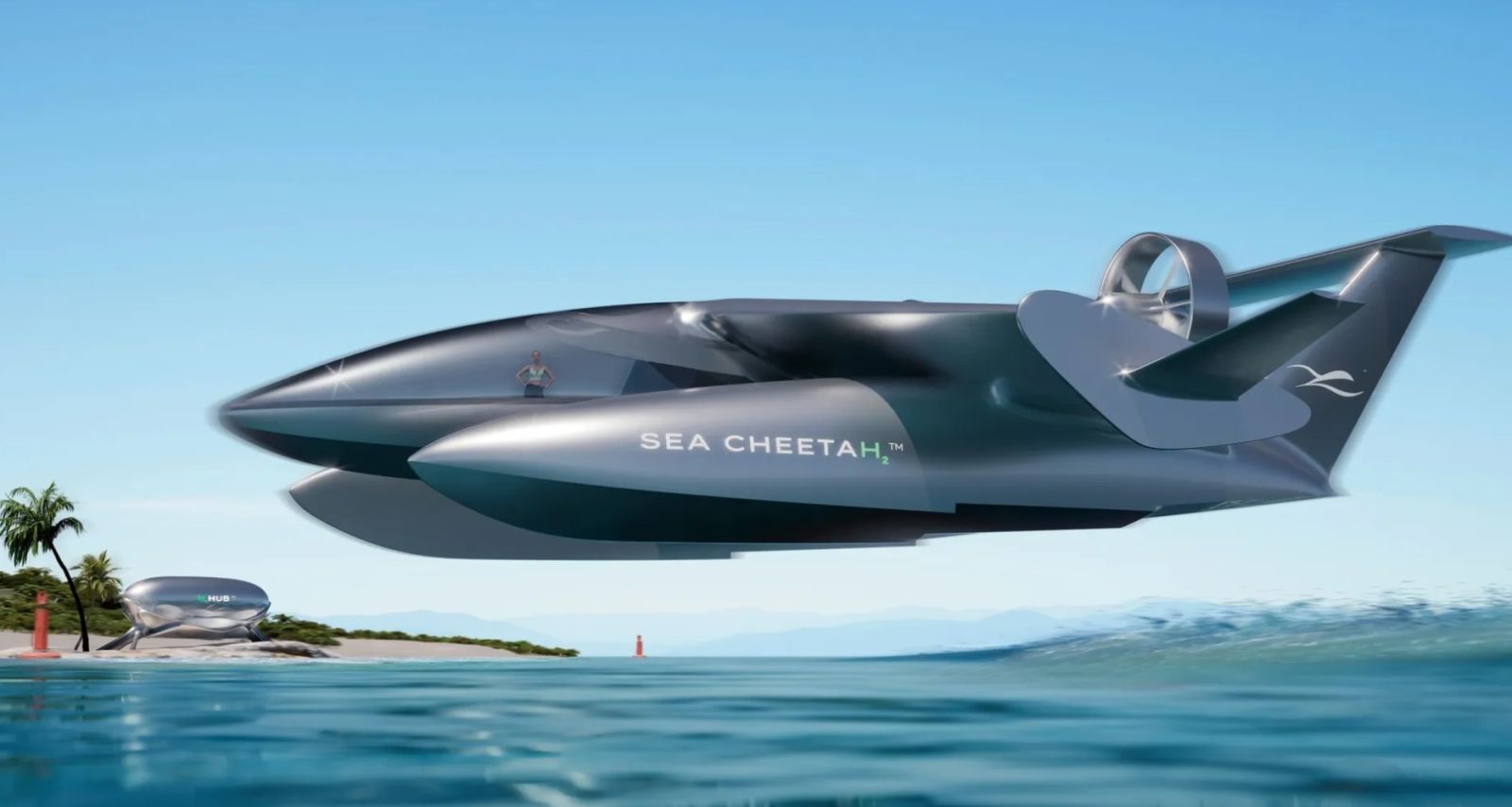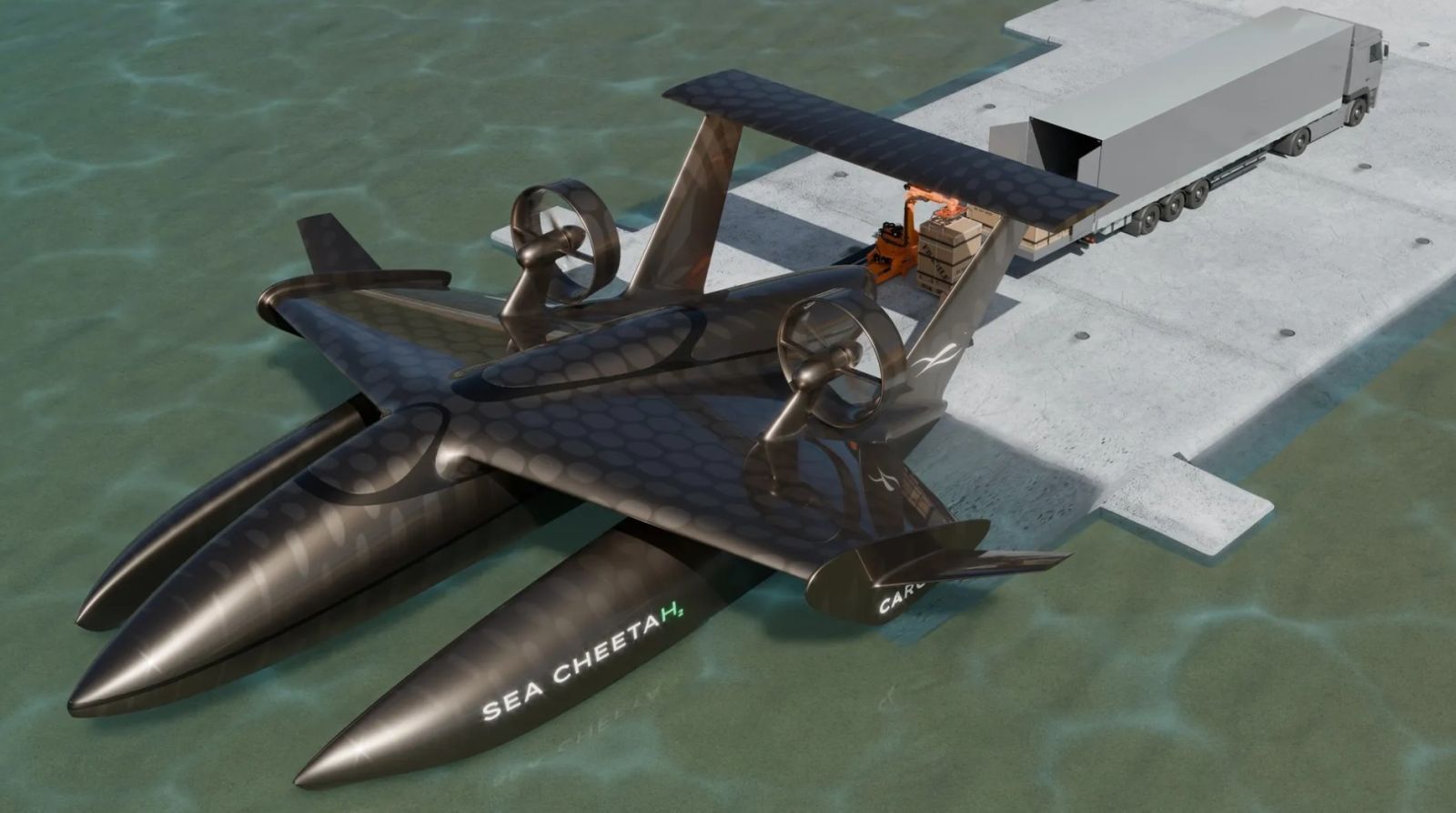This strange flying ship could revolutionize maritime transport
Published by Cédric,
Article author: Cédric DEPOND
Source: H3 Dynamics
Other Languages: FR, DE, ES, PT
Article author: Cédric DEPOND
Source: H3 Dynamics
Other Languages: FR, DE, ES, PT
Follow us on Google News (click on ☆)
Miami-based startup Sea Cheetah is developing this vehicle. The craft, capable of carrying passengers or cargo, will be powered by hydrogen-fueled electric engines, with hydrogen generated locally on H2Hub platforms.

The ground effect, used by the craft, generates additional lift by flying at low altitudes over water. This technology could significantly increase range while reducing energy consumption. Moreover, the Sea Cheetah is subject to a unique regulatory framework. In the United States, it is not classified as an airplane but as a ship, avoiding the lengthy certification processes required for aircraft and ultimately speeding up its commercial rollout.
The vehicle's design features a large, thick wing optimized for the ground effect, equipped with winglets—small fins at the tips of the wings to improve stability and aerodynamics. On the upper side of this imposing wing are two large electric engines, carefully streamlined to minimize drag and enhance performance.
Below the vehicle, voluminous modules serve not only as floats for water landings but also as storage tanks for hydrogen. Depending on the form in which the hydrogen is stored—gaseous or liquid—the range of the vehicle could be significantly extended, potentially even doubled if liquid hydrogen is used.
However, several technical challenges remain. Swells and waves present a major issue, as they can disrupt the craft's stability in flight, making it difficult to maintain low altitude. Furthermore, integrating this type of vehicle into maritime traffic raises concerns.

Its high speed, which is far greater than that of traditional ships, along with its difficulty stopping quickly, poses safety concerns. The craft will need to be equipped with advanced systems to anticipate and avoid collisions, while also adhering to existing maritime navigation rules.
Despite these challenges, the Sea Cheetah is not alone in this market. The Viceroy Seaglider, another ground effect aircraft, already has functional prototypes. This emerging sector is sparking fierce competition to become the leader in zero-emission transport.
What is the ground effect?
The ground effect is an aerodynamic phenomenon that occurs when an airplane or flying craft operates very close to the Earth's surface—typically at an altitude lower than its wingspan. This proximity to the ground compresses the air beneath the wings, increasing lift and reducing drag.
In these conditions, the vehicle enjoys improved energy efficiency. It can travel a greater distance while consuming less fuel than an airplane flying at high altitudes.